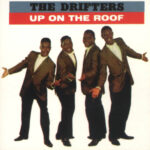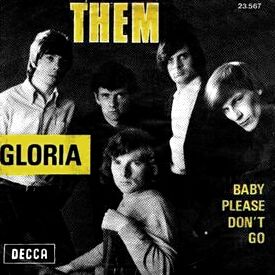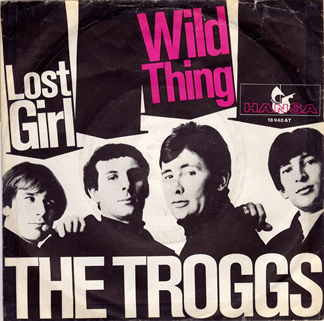 There’s a song for every kind of heartbreak, but only a rare few can make you feel free. “Up on the Roof” by The Drifters is one of them—a soul-soothing, gently ascending anthem that turns loneliness into peace, anxiety into calm, and the urban grind into poetry. Released in 1962, it’s one of those timeless tracks that still feels like a deep breath after a long day. For over six decades, its message has stayed simple and pure: when life gets too heavy, go higher—literally and emotionally.
There’s a song for every kind of heartbreak, but only a rare few can make you feel free. “Up on the Roof” by The Drifters is one of them—a soul-soothing, gently ascending anthem that turns loneliness into peace, anxiety into calm, and the urban grind into poetry. Released in 1962, it’s one of those timeless tracks that still feels like a deep breath after a long day. For over six decades, its message has stayed simple and pure: when life gets too heavy, go higher—literally and emotionally.
“Up on the Roof” stands as one of the crown jewels of early ’60s pop and R&B, crafted by one of the greatest songwriting duos in history: Gerry Goffin and Carole King. The pair were unstoppable during that era, churning out hits for The Shirelles, The Chiffons, and Little Eva, but there’s something special about this one. The Drifters gave their words wings—floating them above the cityscape on silky harmonies and easy rhythm.
It’s not just a song—it’s a state of mind.
The Sound of Escape
The Drifters had already mastered the art of romantic elegance by the time they recorded “Up on the Roof.” With hits like “Save the Last Dance for Me” and “There Goes My Baby,” they had built a sound that blended street-corner doo-wop, orchestral pop, and smooth soul. But “Up on the Roof,” produced by Jerry Leiber and Mike Stoller, was something different—something ethereal.
The song begins with a gentle piano line that feels like the first cool breeze after a long summer day. Then come the harmonies—soft, stacked, angelic. The rhythm section doesn’t push; it glides. Every instrument moves with quiet assurance, as if afraid to disturb the serenity it’s building.
And then there’s Rudy Lewis, The Drifters’ often-overlooked lead singer, whose voice turns the song into an intimate confession. He doesn’t belt; he sighs. When he sings, “When this old world starts getting me down, and people are just too much for me to face,” you instantly believe him. He sounds weary—but not defeated. The melody lifts just as he does, rising with hope instead of resignation.
It’s the kind of song that captures a mood you didn’t know you needed until you hear it.
1962: The World Below
To appreciate the song’s brilliance, you have to understand where it came from. 1962 was a turning point in American music—rock ’n’ roll had matured, Motown was gaining momentum, and the Brill Building was humming with creativity. But beneath the glitz of pop, America was tense. The Cold War loomed, civil rights struggles were heating up, and the pace of modern life was accelerating.
“Up on the Roof” arrived as a gentle antidote. It didn’t deny the chaos—it offered an escape from it. The lyrics describe a man who finds his sanctuary not in wealth or fame, but in solitude. His rooftop isn’t glamorous—it’s peaceful.
“When I come home feeling tired and beat, I go up where the air is fresh and sweet.”
It’s such a simple image, but it captures something profound: the idea that sometimes, peace isn’t about leaving the world behind—it’s about finding a quiet corner within it.
In that sense, “Up on the Roof” was decades ahead of its time. Long before mindfulness, meditation apps, or wellness culture, it was a three-minute reminder that sometimes all you need is perspective.
Goffin & King: The Architects of Emotion
Gerry Goffin and Carole King wrote “Up on the Roof” in their Brill Building office—a tiny room overlooking the same kind of skyline the song would later celebrate. King provided the lilting, dreamlike melody, while Goffin wrote lyrics full of empathy and gentle wisdom.
The genius of their collaboration was always how human their songs felt. They could take universal emotions—love, longing, weariness—and translate them into melodies that sounded inevitable, like they’d always existed.
“Up on the Roof” might be their purest expression of that gift. It’s not a love song, not in the traditional sense. It’s about self-preservation. It’s about how we all need a refuge—a place, physical or emotional, where we can breathe again.
When you listen closely, you can almost feel the writers in their New York office, surrounded by the buzz of the city below, dreaming of a quiet space above it all.
The Drifters’ Golden Era
The Drifters’ lineup changed frequently, but each incarnation brought something special. The version that recorded “Up on the Roof” featured Rudy Lewis on lead vocals—replacing the great Ben E. King, who had departed for a solo career. That could have been a crisis for most groups. For The Drifters, it was an opportunity.
Lewis’s voice was softer than King’s but equally soulful. He didn’t overpower the song; he let it breathe. His delivery was both precise and emotional, giving the lyrics a quiet confidence. You can hear the maturity in his phrasing—he sounds like someone who’s been through enough to know that escape isn’t weakness; it’s survival.
The harmonies from the rest of the group—Charlie Thomas, Dock Green, and Tommy Evans—float around him like sunlight glinting off water. Together, they created one of the most graceful vocal arrangements of the early ’60s.
“Up on the Roof” climbed to No. 5 on the Billboard Hot 100 and No. 4 on the R&B chart, confirming that The Drifters were still at the top of their game even as musical tides were shifting.
The Beauty of Simplicity
Part of what makes “Up on the Roof” timeless is how effortlessly it communicates its message. The lyrics don’t rely on metaphorical acrobatics—they’re straightforward and sincere.
When Rudy Lewis sings, “Right smack dab in the middle of town, I’ve found a paradise that’s trouble-proof,” it’s not poetry in the abstract sense—it’s emotional truth. You don’t need to decode it. You just feel it.
And that’s the power of great pop songwriting: simplicity used with precision. Every word and chord serves the emotion. There’s no filler, no grand gesture—just a perfect balance of melody and message.
The song’s structure mirrors its meaning, too. The verses describe the world’s weight, and the chorus lifts you above it. By the time Lewis hits the final line—“You just have to climb up on the roof”—you feel like you’ve taken the journey yourself.
More Than a Love Song
Many of The Drifters’ biggest hits were about romance, but “Up on the Roof” was different. It was introspective. It wasn’t about a lover—it was about the self. That was a subtle but radical shift for early ’60s pop, which often focused on teenage infatuation.
This was a song about emotional independence. About learning to cope with life’s noise without running away completely. It was urban soul for people who lived in small apartments and needed somewhere to dream.
The fact that it became such a massive hit says a lot about how deeply it resonated with listeners. It didn’t glamorize escape—it humanized it.
Carole King’s Own Rendition
Though The Drifters’ version remains definitive, Carole King later recorded her own beautiful rendition for her 1970 masterpiece Tapestry. Her version feels more intimate—less polished, more personal. Where The Drifters soar, King reflects. Her piano carries the melody like a lullaby, and her voice, slightly cracked with experience, gives the lyrics new depth.
Hearing her sing her own creation decades later feels like visiting an old rooftop you once knew. The view has changed, but the feeling hasn’t.
It’s a testament to the strength of the songwriting that both versions—glossy ’60s soul and introspective ’70s folk—work equally well.
The Song’s Legacy
Over the years, “Up on the Roof” has been covered by an incredible range of artists: James Taylor, Laura Nyro, Bette Midler, and even The Cryan’ Shames, each bringing something distinct to the song. Taylor’s 1979 version, gentle and folk-inflected, became another hit, introducing the song to a new generation.
But no matter who sings it, the message remains unchanged: the rooftop is universal. It’s the mental space where you escape the world’s chaos and rediscover yourself.
That’s why the song keeps resurfacing in pop culture. It appears in movies, commercials, and even Broadway shows because it still feels relevant. It’s one of those rare songs that can calm you the moment it begins.
Why It Still Resonates Today
Listen to “Up on the Roof” in 2025, and it still sounds like medicine. The pace of life has only gotten faster, the noise louder. Social media has replaced the street corner as the source of daily stress, and we all carry the world’s chatter in our pockets.
Yet the need for escape hasn’t changed—it’s probably greater now than ever. That’s what makes the song eternal. When Rudy Lewis sings about finding peace above the city, he could just as easily be describing someone turning off their phone and sitting quietly on a balcony at dusk.
The song’s message transcends time because it speaks to a universal truth: we all need somewhere to breathe.
A Gentle Reminder
“Up on the Roof” isn’t just a piece of nostalgia—it’s a philosophy. It reminds us that happiness isn’t about control or conquest. It’s about perspective.
The Drifters didn’t sing this song like preachers or prophets; they sang it like people who’d lived enough to know what exhaustion feels like. That’s what gives it its emotional honesty. It’s not escapism—it’s relief.
And that’s why it still lands today, across generations and genres. When life gets noisy, when the world feels like too much, “Up on the Roof” offers three minutes of sanctuary.
Final Thoughts
There’s no shortage of great songs from the early 1960s, but few have aged as gracefully as “Up on the Roof.” It’s as gentle as a lullaby yet as powerful as a prayer. Its simplicity hides a profound truth about being human—that sometimes the best thing you can do is step away, breathe, and remember that peace is possible.
The Drifters’ performance remains unmatched—polished but sincere, full of warmth and grace. Goffin and King’s songwriting is textbook brilliance, a perfect marriage of melody and meaning. And the production, rich but restrained, gives it an ageless quality.
More than sixty years later, “Up on the Roof” still feels like home. It’s the sound of quiet resilience, of choosing calm over chaos. It’s the soundtrack to every evening when you’ve had enough and need to remember who you are.
Because no matter how much the world changes, there will always be rooftops. And there will always be songs like this to help us climb them.


